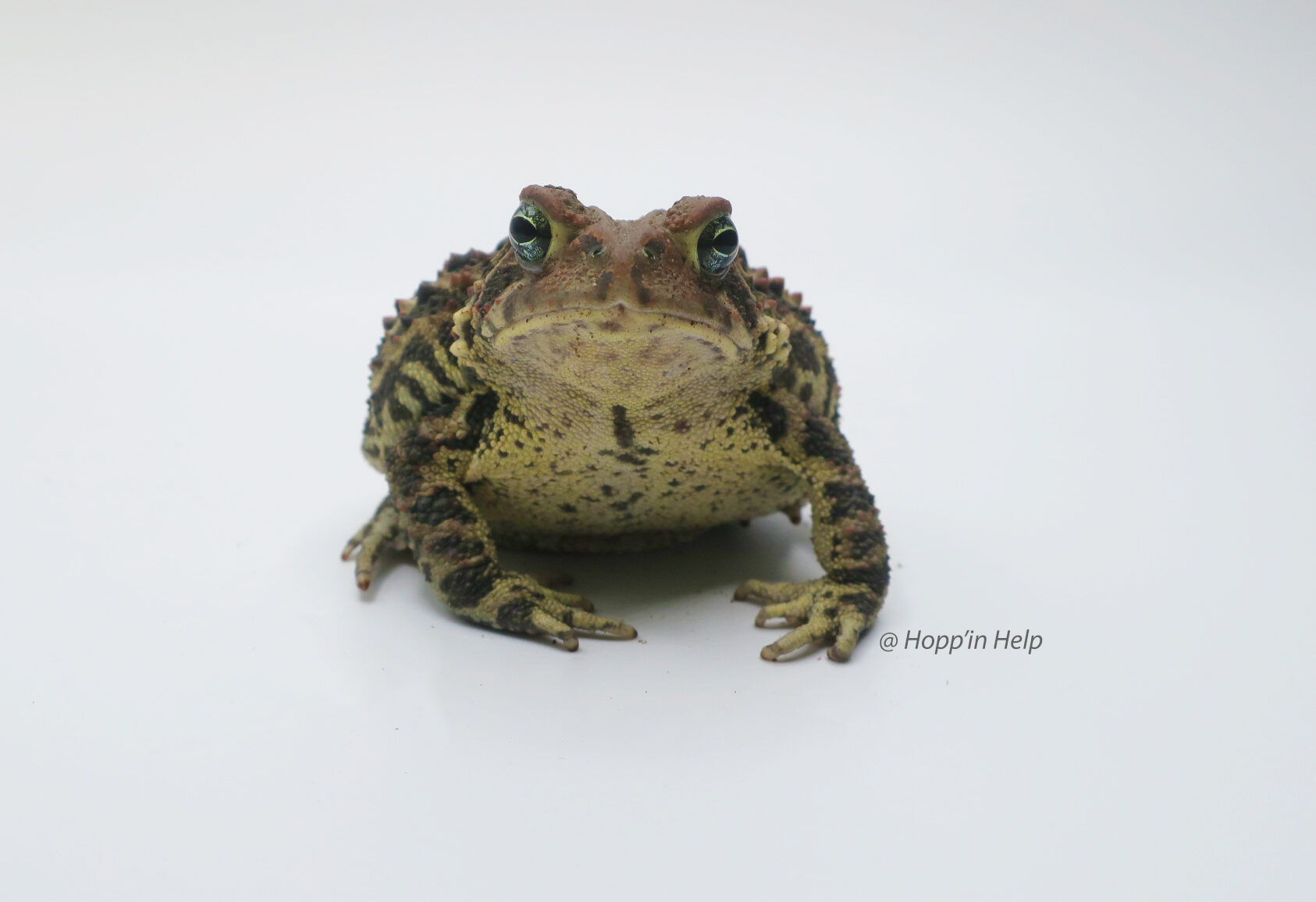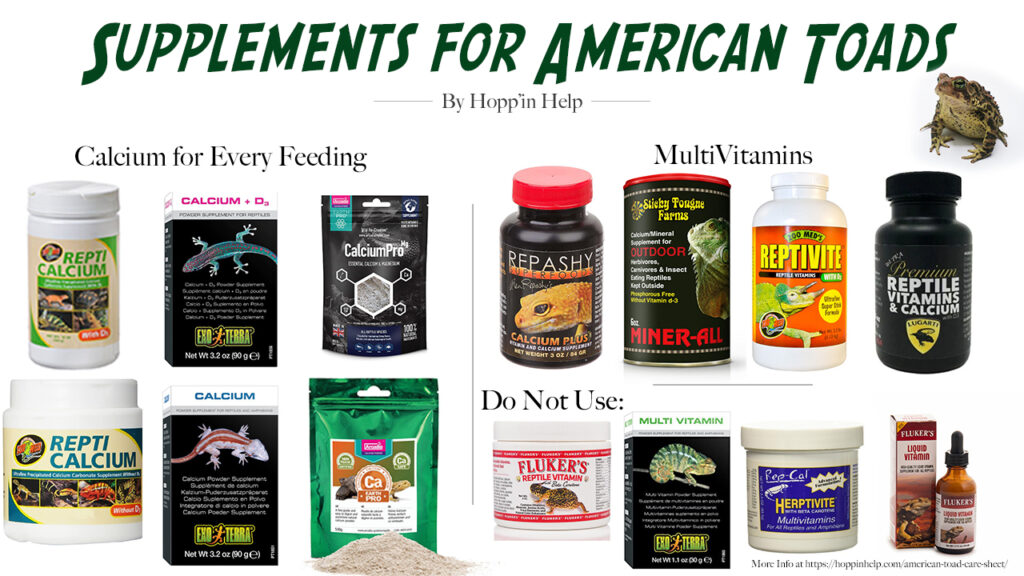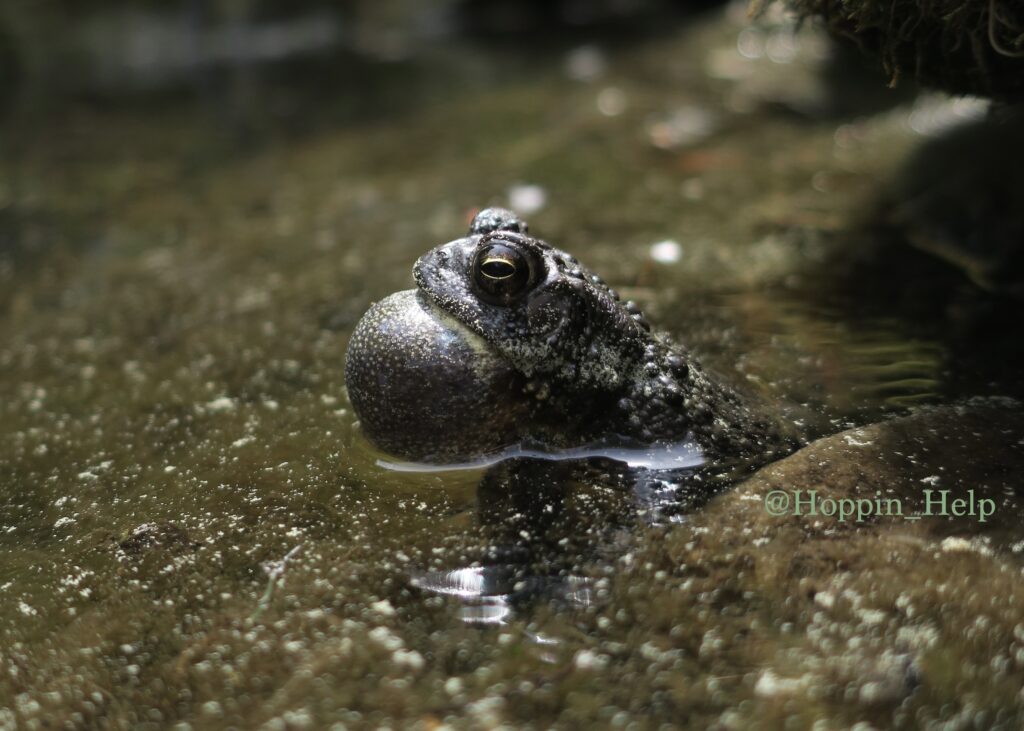AMERICAN TOAD CARE SHEET Bufo americanus

PERSONAL EXPERIENCE: American Toads are truly one of the most gentle and lovable species of Amphibian. In the United States, these toads can be found everywhere east of the Rocky Mountains. They are found from central Canada to the northern regions of Mexico. They are common backyard friends. This species has seemed to adapt well to some human-modified habitats. You may have a porch friend who enjoys digging in your potted plants or using a back door light as a personal bug catcher! They cause no harm and are in fact an important member of the native ecosystem!
Catching American Toads is a memory almost every kid growing up in the Eastern United States has. Though they are very lovable toads, it is best to keep them in their native environment outdoors. This care sheet is for injured American Toads who are not able to return to the wild or captive breed toads.
CAPTIVITY DIFFICULTY: Beginner
LIFE SPAN: 10-12 years
ACTIVITY: American Toads are mainly nocturnal but can be seen basking in the sun or going for a swim during the day. These toads spend most of the day time resting in their burrows and emerging at sunset. This is when they soak, hunt, and males call out for mates. They are a bit “lazy” though! Do not be alarmed when your toad spends the whole day in its hide, that is perfectly normal! However, these toads are always ready to go when it comes to food.
ENCLOSURE: American Toads require a large amount of coconut fiber substrate to burrow in. 4-6 inches (10-15cm) is suggested if not more. Live leafy plants create amazing hiding spots and environmental enrichment! Toads love burrowing into the roots of plants (which can kill the plants) but the toads love it. I highly suggest a mixture of live and false plants to create a natural, comfortable environment. Log hides, driftwood, and plant pots on their side create amazing hiding places. I personally use log hides because it is more natural and doubles as somewhere they can climb on! Lastly, freshwater must be available at all times. I suggest a water bowl around 3 inches (8cm) deep and 6 inches (15cm) wide. If using tap water, water conditioner must be used. This removes harmful chemicals and makes the water safe for your amphibian. Directions vary so be sure to read the label before using.

SIZE OF ENCLOSURE: A single American Toad can live comfortably in a 30″ x 12″ x 12″ (76 x 30.5 x 30.5 cm) or 20-gallon long. For 2-4 toads a 36″ x 18″ x 16″ (91.5 x 46 x 40.5cm) or 40 gallon breeder is needed! American Toads need more horizontal space than vertical.
HUMIDITY: 50%
TEMPERATURE: Daytime temperatures should be 75 to 85 degrees Fahrenheit or 24 to 29 degrees Celsius.
Nighttime temperatures should never drop below 65 degrees Fahrenheit or 18 degrees Celsius.
LIGHTING: A heat lamp is never necessary unless the room your amphibian is in drops below 65 degrees F or 18 degrees Celsius. If it does, use a low wattage reptile heat lamp in the day, and a low wattage infrared heat lamp at night. A UVB light is beneficial but not required. It may improve your frogs’ overall health. A linear 2.0 UVB is best. Never use higher than 2.0, as it is too strong and can harm your toad’s fragile skin. Proper supplements may be used in place of UVB.

FEEDING: Live crickets or Dubia roaches should be your American Toad’s main diet. Feeding 7-8 medium feeds every other day dusted with supplements is best. I personally feed Monday, Wednesday, Friday. Earthworms, Mealworms, Wax worms, and Horn worms can be given as snacks periodically. A diverse diet means a healthy and happy toad! My toads personally love Earthworms and they make up about 20% of my toad’s diet. Be cautious to not feed large quantities of fatty foods like wax worms as they can cause health issues down the line.
These toads love to eat! Be careful to not overfeed your toad. Some signs that your frog is obese are the following; Toad has trouble moving, has a large fluid-filled pouch under its mouth, the toad appears uncomfortable.
What size crickets or dubias do I get for my American Toad? A general rule for feeding Reptiles and Amphibians is, the food in question’s girth should fit in between the animal’s eyes. American Toads do well with ½ – ¾ crickets and dubia roaches.
SUPPLEMENTS: A vital aspect of maintaining your amphibian’s health in captivity is supplementing their diet with powdered vitamins and minerals. Meeting proper habitat requirements alone will not provide essential nutrients for them to thrive.
Powdered supplements should be dusted onto your amphibian’s meal at every feeding. Calcium is the most important nutrient amphibians receive primarily from the supplements you place on their food. It helps ensure proper bone growth and density, muscle and nerve function, and overall metabolic function. Herptiles without proper calcium levels can develop nutritional secondary hyperparathyroidism (NSHP) or more commonly known as metabolic bone disease (MBD). NSHP is a specific kind of MBD commonly seen in captive reptiles and amphibians. Here the parathyroid glands overcompensate for the lack of calcium, ultimately resulting in bone weakening as the body essentially “steals” calcium from the bones.
Thankfully with a proper diet, NSHP can be avoided altogether. Powdered Calcium supplements are commonly sold in two forms, with D3 and without D3. Amphibians kept with UVB should be given calcium without D3 to avoid possible overdosing of the vitamin. Research has found that naturally produced D3 in the body is safer and more effective than orally supplemented D3. However, for the reasons listed in the “lighting” section, amphibian owners have the best success with oral supplements with products available currently.
In addition to calcium with D3; vitamin A, and multivitamins should be given periodically.

HOW TO SEX: Males have darker colored throats and call for females during the breeding season (March-July). They have bumpy skin, that tends to be bumpier during the breeding season. Males also typically chirp when handled.
Females have cream colored throats, smooth skin, and are typically larger than males.

SIZE: As explained above, American Toads vary in size based on sex. An estimate length for an adult American Toad is 2-3.5 inches (5-9cm).
I AM NEW TO FROGS, ARE THEY GOOD FOR BEGINNERS?
These toads are great for beginners! Easy to care for, maintain, and they enjoy interacting with people!
